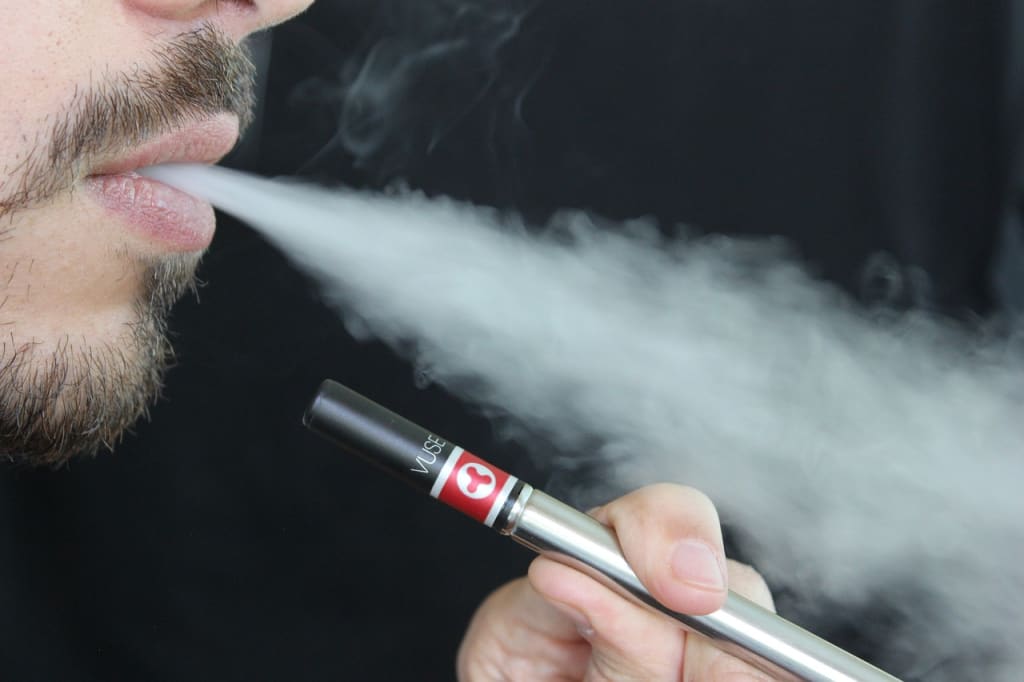Is Vaping Any Different From Smoking?
Let us dive into this Complex Topic

In the United States, it's quite a trend – one in every five high school students is currently caught up in vaping. Across the pond in the UK, it's not much better, with a rising 7% of kids aged 11 to 17 getting into the vape scene, almost doubling in just two years. Surprisingly, more young people are now reaching for vapes instead of traditional cigarettes. But as news about vape-related deaths among the youth spreads and concerns grow over the unregulated chemical flavorings in these new-age vapes, the big question arises: Could science now make the case that vaping is potentially worse than smoking the classic, old-school cigarettes?
To truly grasp the potential dangers, let's dive into the nitty-gritty of the physiological aspects. Here's the deal – the nicotine in vapes hits your bloodstream and brain way faster than the nicotine in cigarettes. Picture this: Vapes have a coil that heats up to temperatures ranging from 110°C to a whopping 1,000°C, creating ideal conditions for a carrier like propylene glycol to turn into what's essentially stage smoke. So, when you're puffing away on that vape, you're inhaling something like the smoke you see at a Taylor Swift concert, mixed in with the active ingredient – usually nicotine – and a bunch of chemical flavorings. Now, studies suggest that the nicotine in vape smoke reaches your lungs in a way that ushers it into your bloodstream and brain faster than if you were smoking a regular cigarette. That's a pretty bold statement.
Now, let's talk about nicotine. It's known for its intense drug effects. When you vape, nicotine enters your bloodstream through your lungs, swiftly making its way to your head, passing through the blood-brain barrier and heading straight into your brain. It's in the brain where nicotine sparks a series of complicated biochemical processes, resulting in increased dopamine levels, giving you feelings of motivation, heightened awareness, concentration, elevated mood, and a bunch of other neurochemical processes that simultaneously relax your muscles. It's quite an amazing feeling, one that people easily get hooked on. But here's the catch – as the nicotine rush starts to fade, cravings kick in. Recent studies even indicate that these cravings can pop up within just four hours of your last nicotine hit. The process, they argue, is more intense with vapes compared to traditional cigarettes because vapes tend to have more nicotine in them. And if that wasn't enough, nicotine also messes with blood flow, potentially causing erectile dysfunction in those using vapes. Yes, you heard it right – a bit of watermelon ice might just shrink your, well, you know.
Now, let's address the elephant in the room – those mysterious vaping deaths that made headlines until February 2020. There were 287 patients hospitalized, and sadly, 68 people lost their lives. What you might not have heard is that these deaths were mainly linked to THC vapes, which are less regulated than nicotine vapes. Some of these THC vapes contained a chemical called vitamin E acetate, wreaking havoc on people's lungs and causing symptoms like coughing, wheezing, and chest pain. Doctors were initially shocked and scared, but the general consensus was that, mistakenly, vitamin E acetate ended up in THC vapes, leading to these tragic outcomes. This created a disease called E-cigarette or Vaping-Associated Lung Injury (EVALI). The hope now is that THC vapes no longer contain vitamin E acetate. However, the whole EVALI saga underscores the potential risks of unregulated substances in vaping products.
Beyond the nicotine and THC concerns, there's a whole other dimension to worry about – the chemical flavorings added to make vaping more enjoyable. Ingredients like cinnamaldehyde, responsible for that cinnamon flavor, have been found to impair the cilia in your lungs, making it harder for them to get rid of debris and expel pathogens. Other additives like 2,5-dimethylpyrazine (responsible for that chocolatey taste) and isoamyl acetate (the reason your vape might taste like bananas) have pro-inflammatory effects on the respiratory tract, potentially leading to cancer. Recent studies even reveal that vape smoke contains benzene and other volatile organic compounds, contributing to chronic respiratory conditions.
And let's not forget about the vaping coils, which contain manganese and zinc. Inhaling these metals can lead to airway epithelial injury and tissue hypoxia, resulting in lung changes consistent with chronic obstructive pulmonary disease (COPD). In simpler terms, mice exposed to vape aerosols developed lung changes that align with COPD – a disease that claims the lives of 100,000 Americans each year from smoking.
But wait, there's a twist. Despite all these concerns, scientists and physicians generally agree that, for now, cigarettes are still worse than vapes. Cigarettes involve combustion reactions with tobacco, releasing tar and a cocktail of chemicals that wreak havoc on the lungs in ways beyond imagination. One lung researcher even likened smoking cigarettes to putting your mouth over a car exhaust pipe and inhaling. Now, here's a fun fact – globally, a whopping 1.3 billion people are smokers. That's one in every eight people! This is why cigarettes are considered a worldwide epidemic, responsible for millions of deaths each year. While vaping, on the other hand, isn't as widespread, especially when you look beyond Europe, the US, and China, it's gaining traction, especially among young people who have never touched a cigarette.
So, as we navigate this new-age trend of vaping, especially among the youth who haven't been part of the traditional smoking scene, it's essential to approach it with caution. There's still a lot we don't know, and ongoing research is vital to unravel the long-term effects of vaping, particularly on the lungs of the younger generation. While vaping might not be considered worse than smoking cigarettes at this point, the surge in its popularity and the potential health risks associated with it warrant close attention. As the vaping trend continues to spread globally, keeping a watchful eye and implementing necessary regulations is imperative to address the potential health risks associated with this relatively new phenomenon.
About the Creator
jason ben
Passionate Media Research Student and Enthusiast.Keeping a Finger on the Pulse of Information, Dedicated to Staying Informed and Informing Others.Future Media Maven in the Making. Let's Connect and Dive into the World of Research!
Enjoyed the story? Support the Creator.
Subscribe for free to receive all their stories in your feed. You could also pledge your support or give them a one-off tip, letting them know you appreciate their work.






Comments (2)
This is something else in society today
Can't stop reading your works